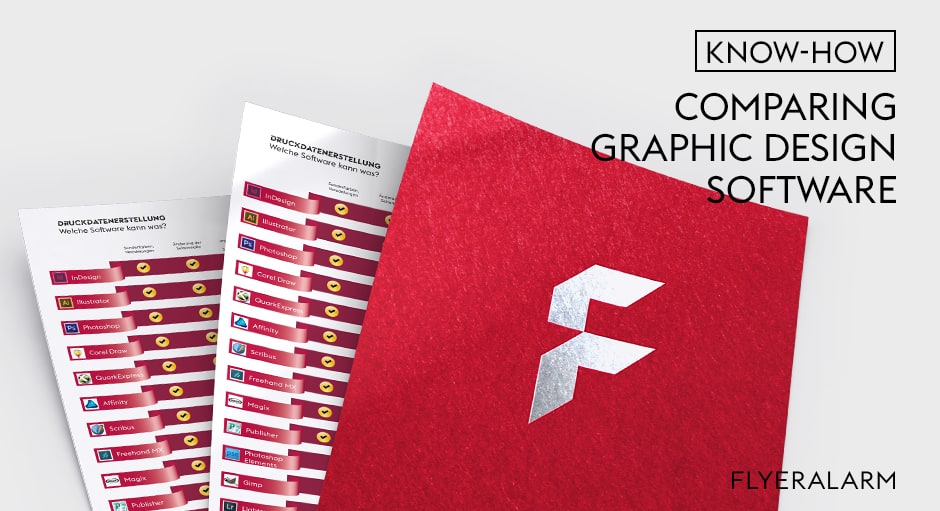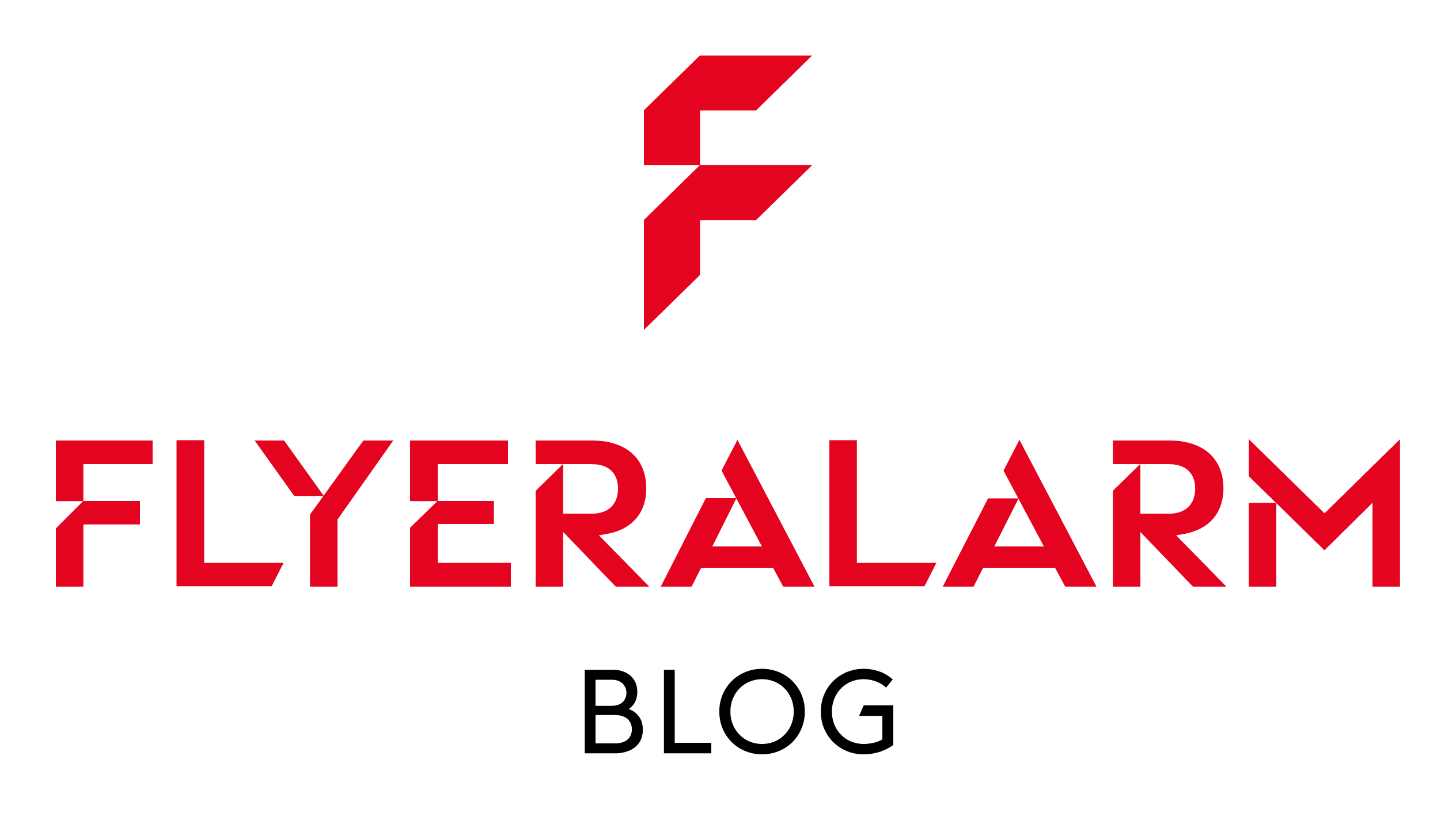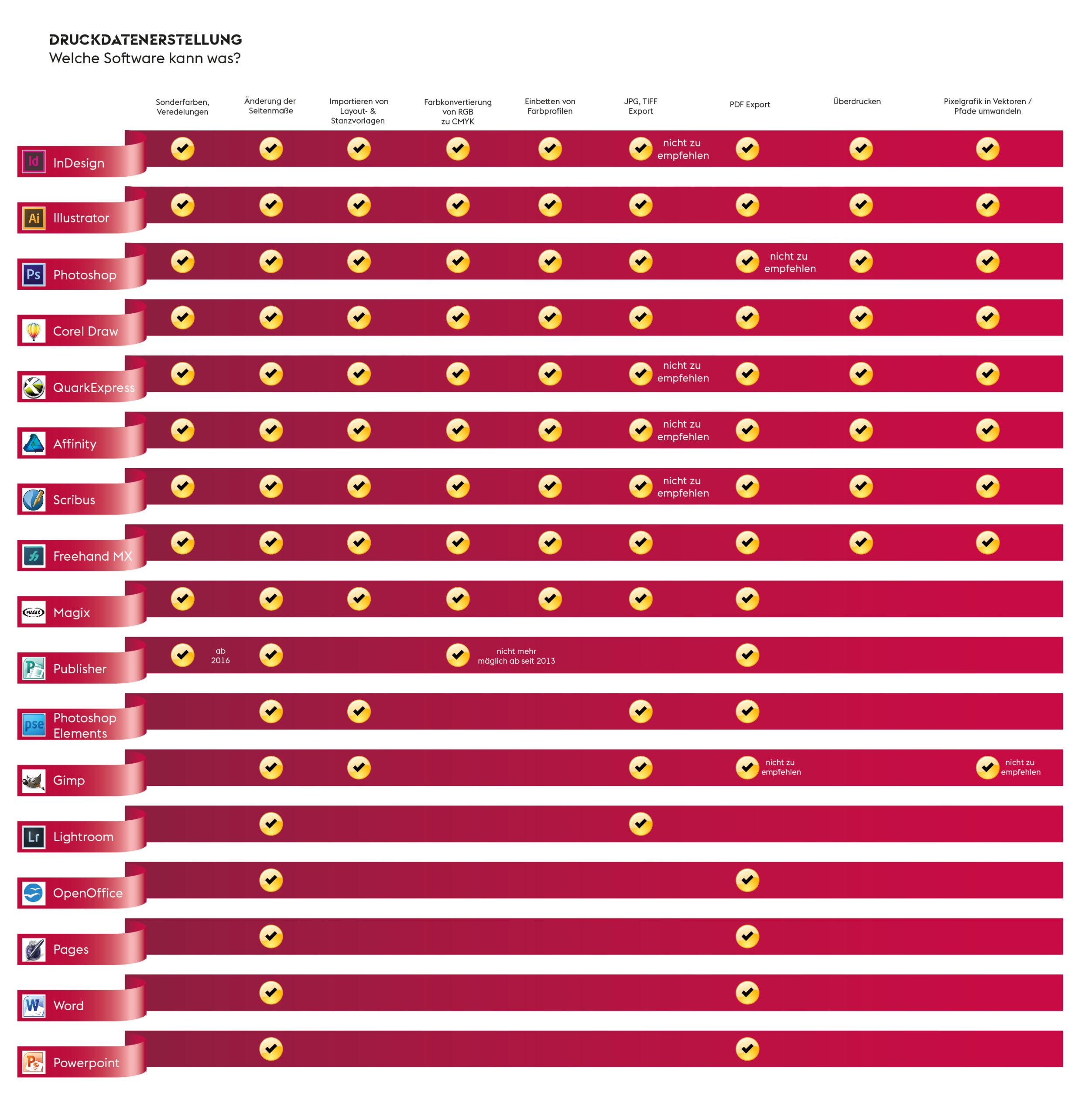
Print files can be produced using a range of software applications. This brief article compares the functionality of a number of these programs.
You can generate layouts for your print products using numerous different programs. But when it comes to special requirements, lots of programs quickly reach their limits. This includes, for example, applying special colours, importing layout templates and in particular the output of a JPG, TIFF or PDF file. Because this is an absolute requirement for a perfect printing result.
We have compiled an overview of the most commonly used graphic design and image editing software and identified those that support functions that are particularly important for the printing process. They include:
- Application of a fifth colour channel for special colours and finishes
- Changing the page dimensions
- Importing design and punching templates
- Colour conversion from RGB to CMYK
- Embedding colour profiles
- Output in JPG, TIFF PDF/X-3:2002 formats
- Overprint function
- Converting bitmaps to vector graphics
In conclusion
For a professional print file, you should use graphic design and image editing programs specifically developed for this purpose. Other applications such as the Windows Office programs cannot create PDFs that are compliant with the needs of the printing industry. This has a negative effect on the results.
Tip: Adobe is the global leader when it comes to professional graphic design and image editing software. All of the Adobe applications are included in the Creative Cloud suite, which can be obtained as a monthly subscription. This ensures that the programs are always up to date and can be used across a range of devices. You can also download Adobe Creative Cloud at less expensive prices through FLYERALARM.

